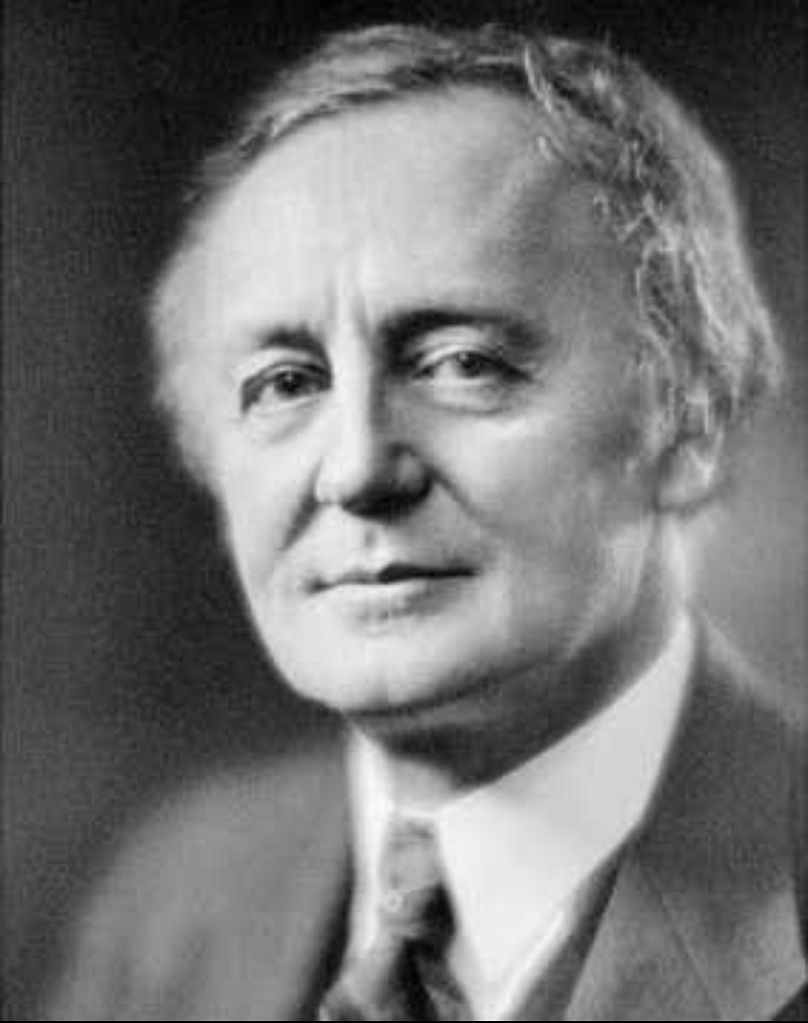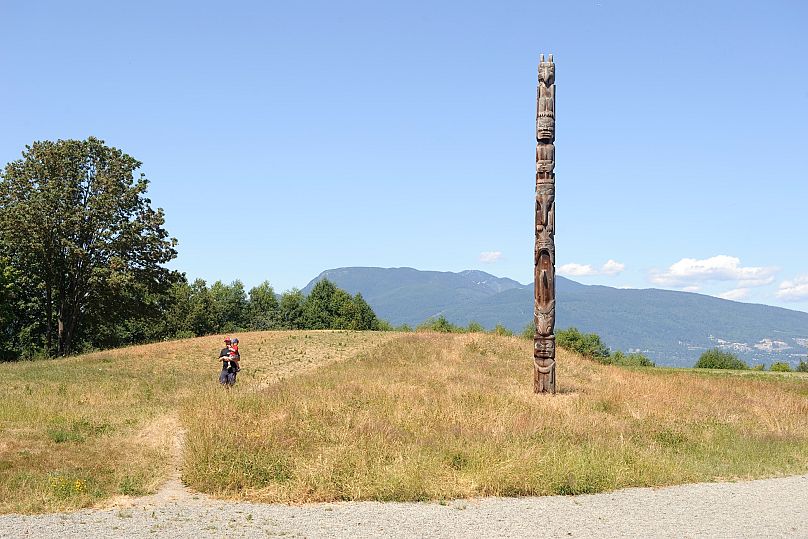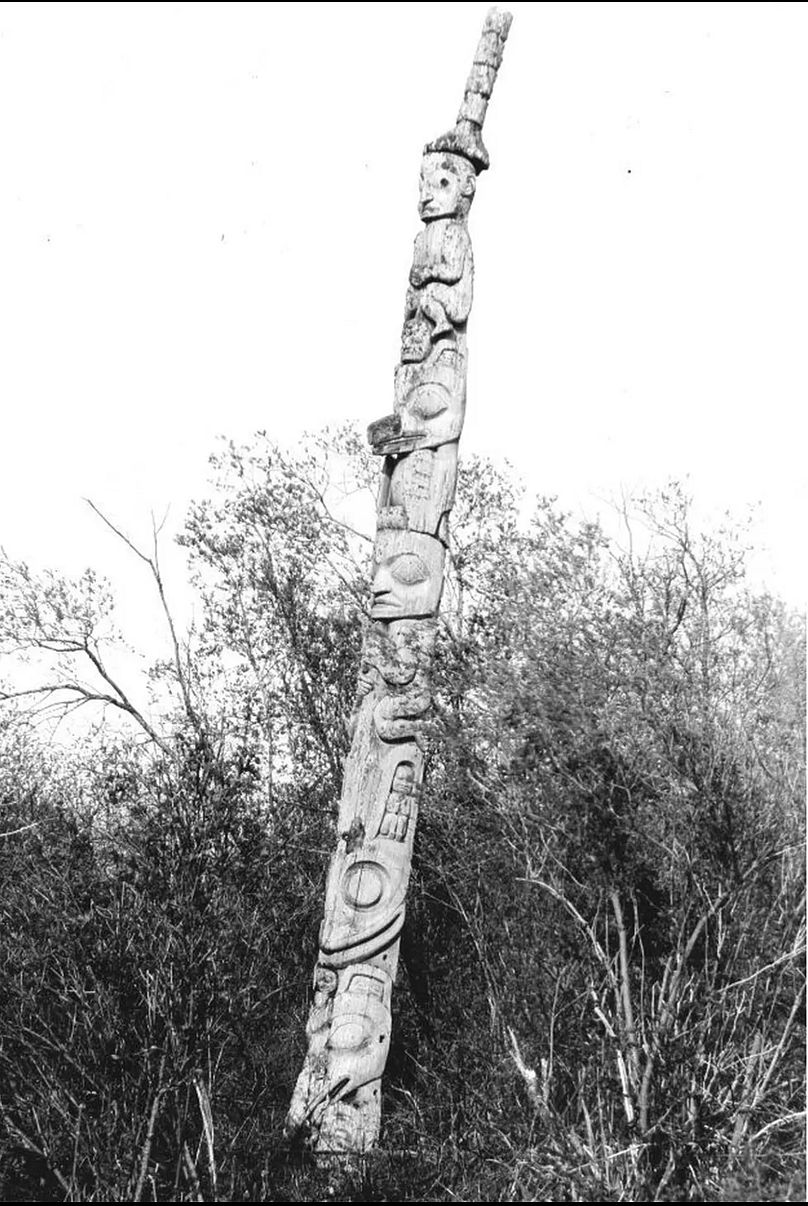The vast artefact is being prepared for return from the National Museum of Scotland in Edinburgh to the Nisga'a Nation, an indigenous group based on the west coast of Canada, after it was 'stolen' nearly a century ago.
As the fight to return artefacts to their original homes continues across Europe, the National Museum of Scotland appears ahead of the curve.
The Edinburgh-based institute is preparing to return its popular totem pole exhibit to the Nisga'a Nation where it belongs.
Next month, it will make the journey 6,800km to the west coast of Canada which is home to the Nisga’a people, an indigenous group who now live in what is now known as British Columbia.
The one tonne, 11 metre (36-foot) totem pole has remained in Scotland for nearly a century. It was originally sold to the museum by Canadian anthropologist Marius Barbeau.
Nisga'a researchers have long claimed that the artefact was not sold in good faith and was stolen while locals were absent from their communities for the annual hunting season.
Sim’oogit Ni’isjoohl of the Nisga’a, also known as Chief Earl Stephens, has expressed the importance of the Edinburgh museum’s decision to return the totem pole.
“In Nisga’a culture, we believe that this pole is alive with the spirit of our ancestors. After nearly 100 years, we are finally able to bring our dear relative home to rest on Nisga’a lands”, he said, adding, “It means so much for us to have the Ni’isjoohl memorial pole returned to us, so that we can connect our family, nation and our future generations with our living history”.
Right of return
It won’t be a typical repatriation, though. Instead, the term ‘rematriation’ is applicable here - it reframes the very concept of repatriation by grounding the process of recovering belongings in Indigenous law and is more closely in step with Nisga’a matrilineal society.
Following a close collaboration and year-long discussion between the museum and the Nisga’a Nation, the totem pole is being sent on its way with a closed spiritual ceremony on Monday 28 August to prepare the pole for its journey.
“Since the transfer of the Memorial Pole was agreed last December, our collections care teams have been planning for the complex task of carefully lowering and transporting it in what is the first return of its type by a UK institution”, explains Dr. Chris Breward, Director of National Museums Scotland.
On its arrival at British Columbia, a public arrival ceremony will be held at Hli G̱oothl Wilp-Adoḵshl Nisga’a on 29 September with a feast to follow.
It will be raised in the subsequent days and is set to go on public view in late October.
The pole was commissioned in 1860 by House of Ni’isjoohl Matriarch Joanna Moody. Nisga’a master carver Oyee made the artefact to honour Moody’s family member Ts’awit, who was next in line to be chief. He had died protecting his family and nation. The totem, which features family crests and carved animals and human figures, tells the warrior's story.
Dr. Amy Parent, also known as Sigidimnak’ Noxs Ts’aawit, says the Nisga’a people hope the museum’s choice will inspired similar bodies to follow suit.
“We are grateful to collectively tell a new story that turns the colonial gaze onto itself by acknowledging the complexities of our pole’s theft, its intergenerational absence from our community and the persistence needed to ensure that justice for our ancestors prevails”, she says, adding “it is possible to do the right thing by returning our ancestors, cultural treasures and belongings back to us, their rightful relatives.”














